Starting Seeds, Hugelkulturs, and Earthbag Rows!
I think maybe its because February is short that we expect for March to be long. However, it always seems to fly by with a quickness, taking with it the cold out of our bones, and adding some green grass to brighten our gloomy spirits. Maybe losing that hour for daylight savings time makes March seem shorter as well. In any case, I can’t believe its over. March in Oklahoma saw daytime highs in the upper 70’s and lows in the 40’s, with just two days at the beginning that were below freezing. Even in the last week, we’ve had a couple of nights with freezing temps. Our little seedlings are so ready to go into the ground, but we don’t dare attempt that until after the danger of overnight freezes. Frosts are okay, I think. But hard freezes can be bad even for hardy broccoli. Here’s a cool little article on the veggies that can withstand light and hard frosts: Botanical Interests Frost Tolerance of Vegetables.

We decided to spend our son’s Spring Break week out at the farm, “camping” in our trailer, cooking meals on the fire, and working on the landscape during the days. Sometimes I feel like all we do is move dirt around. However, there is a zen to shoveling that is quite relaxing once you get into it. Aaron got all permi-fied and dug and built us a new hugelkultur, this time in the shape of a C. The open end of the C is pointed at the uphill slope in order to catch and store rainwater. This is the biggest hugel we’ve built! First, we removed the topsoil layer and set it in the middle:

That enormous pile of wood in the background – yeah, it all fit into the hole. Then we removed the second layer (about another shovel length down) and placed it around the outside of the hole.
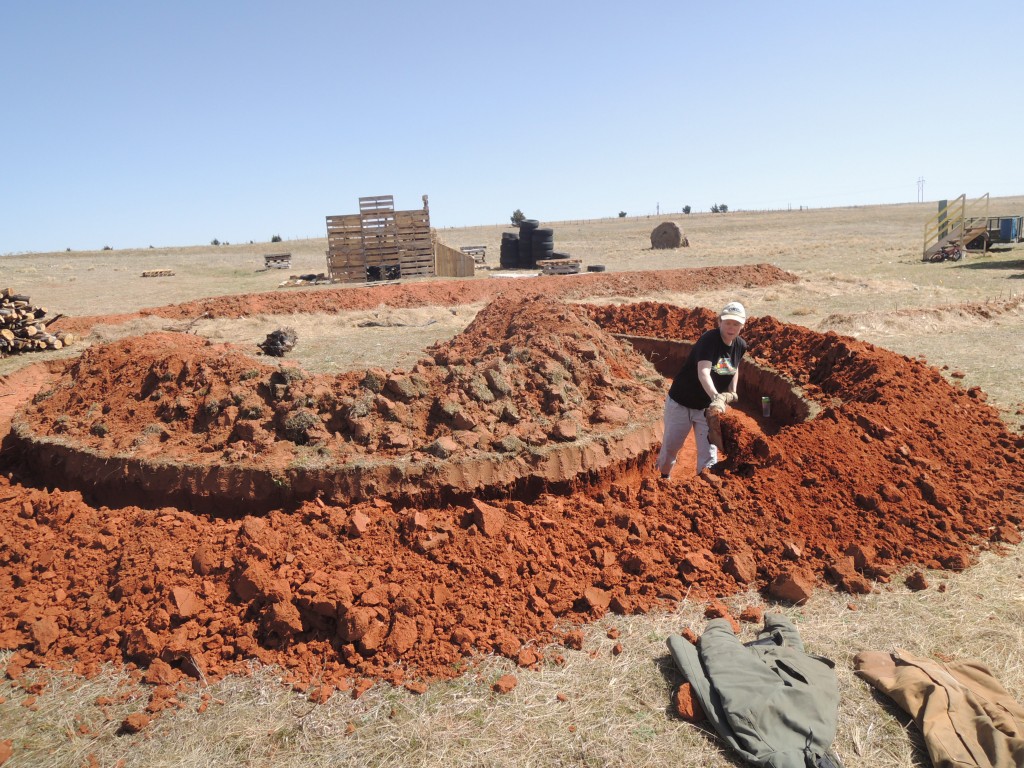
Then we placed all the logs and sticks into the hole with the largest on bottom and smallest on top.

Then a layer of hay was strewn on top of the logs and sticks. This was to help keep the soil from falling down into the logs for a while. Just long enough for our spring rains to be able to penetrate down into the logs.
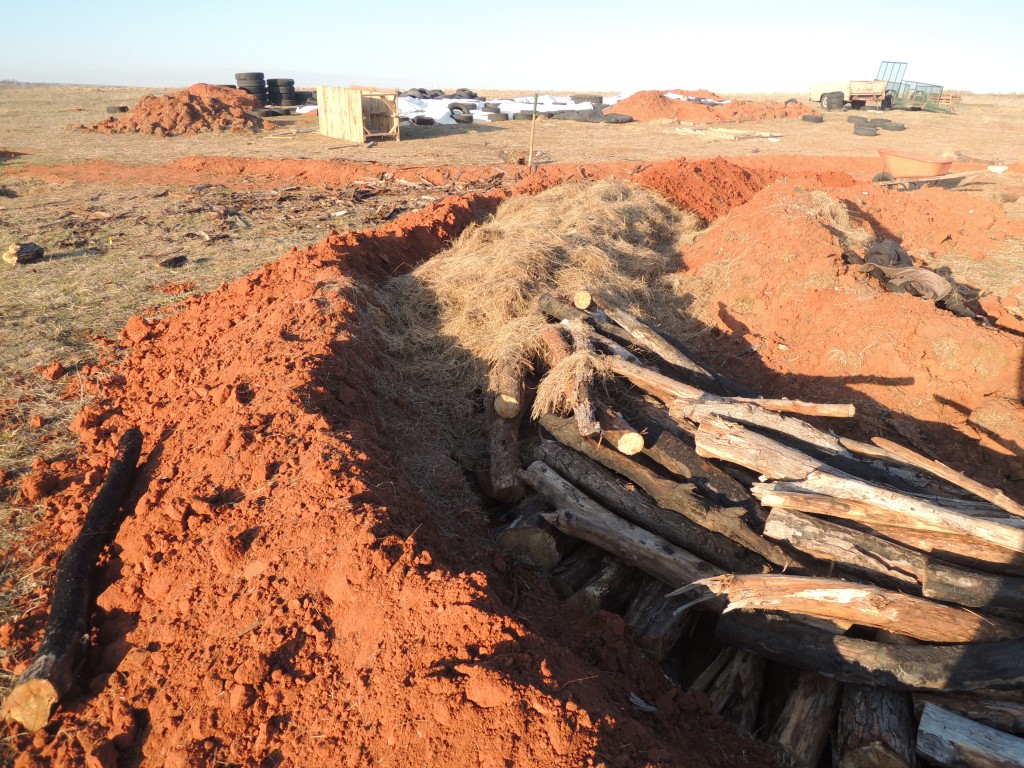
Finally, the soil was added back on top; first the deeper brown dirt from outside of the circle, and then the top soil from inside.
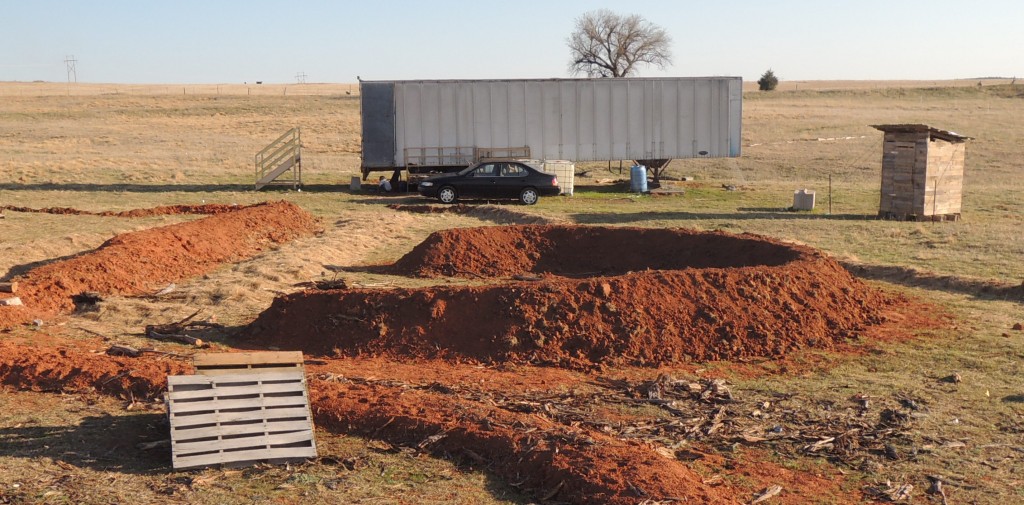
The interior of the circle has the potential for a tree and shrub filled sitting area with benches and maybe an outdoor shower. We had a campfire in the middle one night and were almost entirely protected from the wind. As you can see, the west side of the hugel gets a lot more evening sun, whereas the inside, facing east, gets more morning sun. We have just created multiple micro-climates!
The inside of our clubhouse is somewhat of a microclimate, protecting our cooking fire from the wind. The boys found that they could sit on the top deck and watch the sunset.
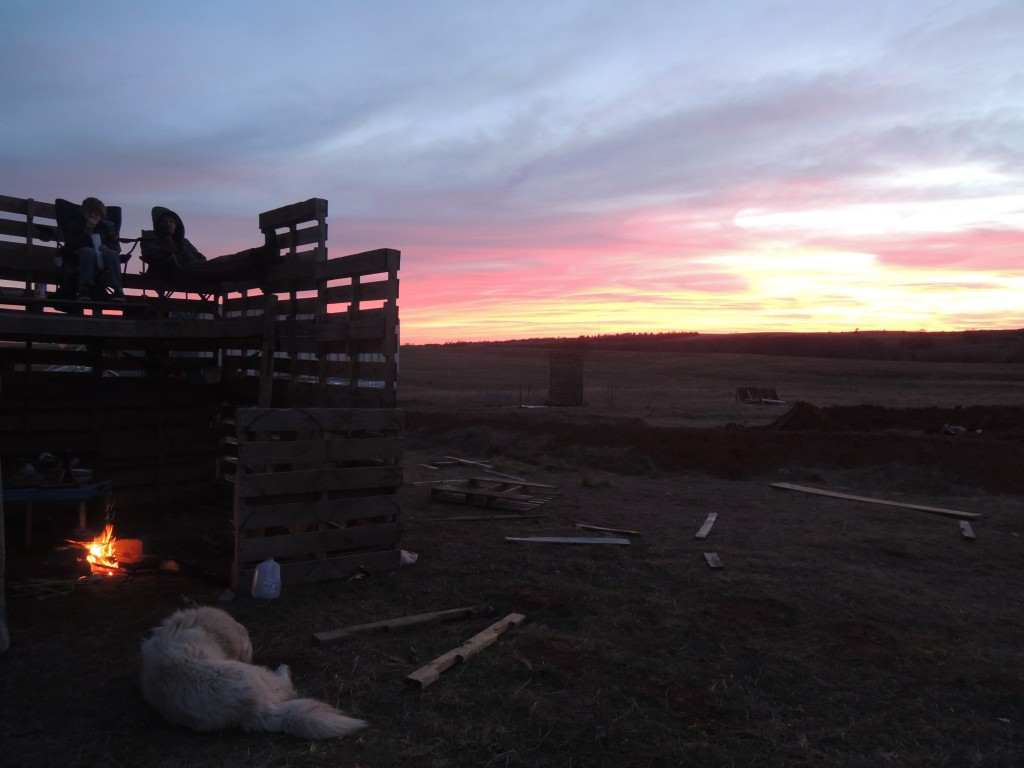
During that Spring Break week that we camped at H.O.M.E. Farm, the evening sun hazed over with dust. It appeared to be one of the dust storms of the “dirty thirties,” but it didn’t last more than a couple of hours. The wind was howling and dust and grit were making it very difficult to keep our eyes open. There was grit in my teeth and hair and it blew into any dishes that were open-side-up. I can’t imagine what it must have been like for a real dust storm to pass through.
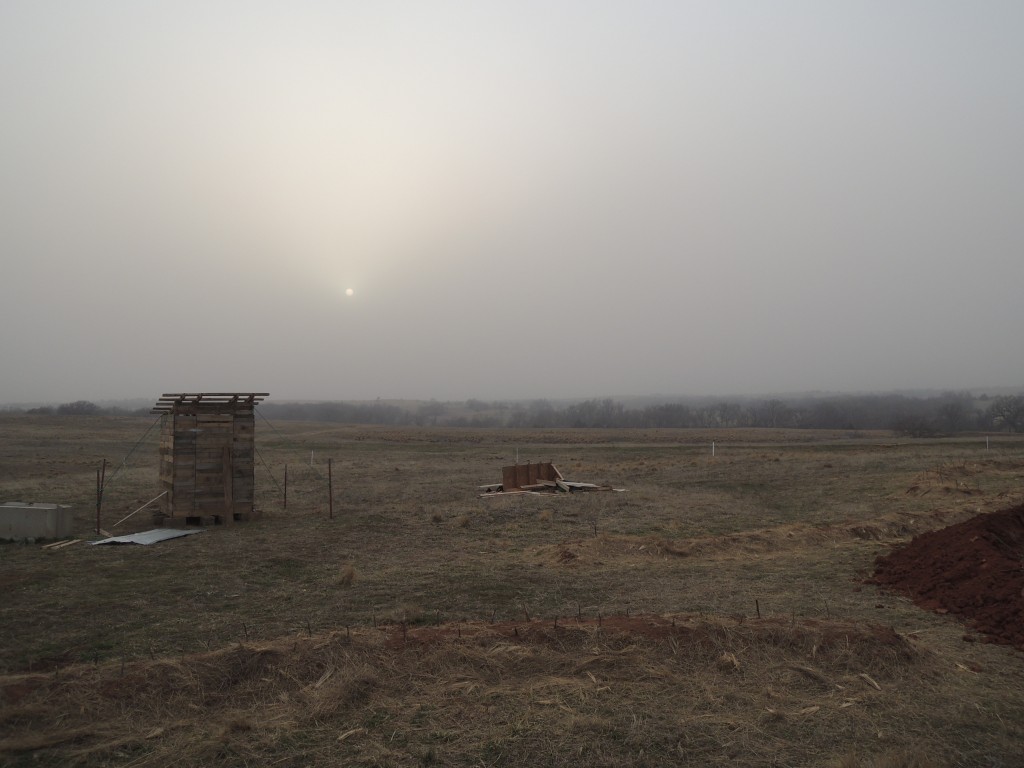
We also spent a lovely warm late March morning at our farm friends’ Vineyard Planting and Open Farm Day. Forbidden Fruits Farm and Vineyard is located in our same county, Caddo, and they are aiming to be a vineyard with wine-tasting room and eventually a chapel that overlooks the vineyard. They requested the help of local folks to plant about 700 grape vines. We learned that besides being extremely easy to plant, grapes grow very well here. With irrigation, anyway. We will definitely be looking into growing some without irrigation in the future. Click here to learn more about Forbidden Fruits Farm and Vineyard.

And finally, for the most exciting part of March, we started bag work on the Earthbag home! The bags came via a big FedEx truck and look like big rolls of toilet paper. They are actually tubes instead of bags. Tubes instead of bags means that the wall-building process can proceed faster because there is more continuous filling as opposed to fill, twist and fold, fill, twist and fold.
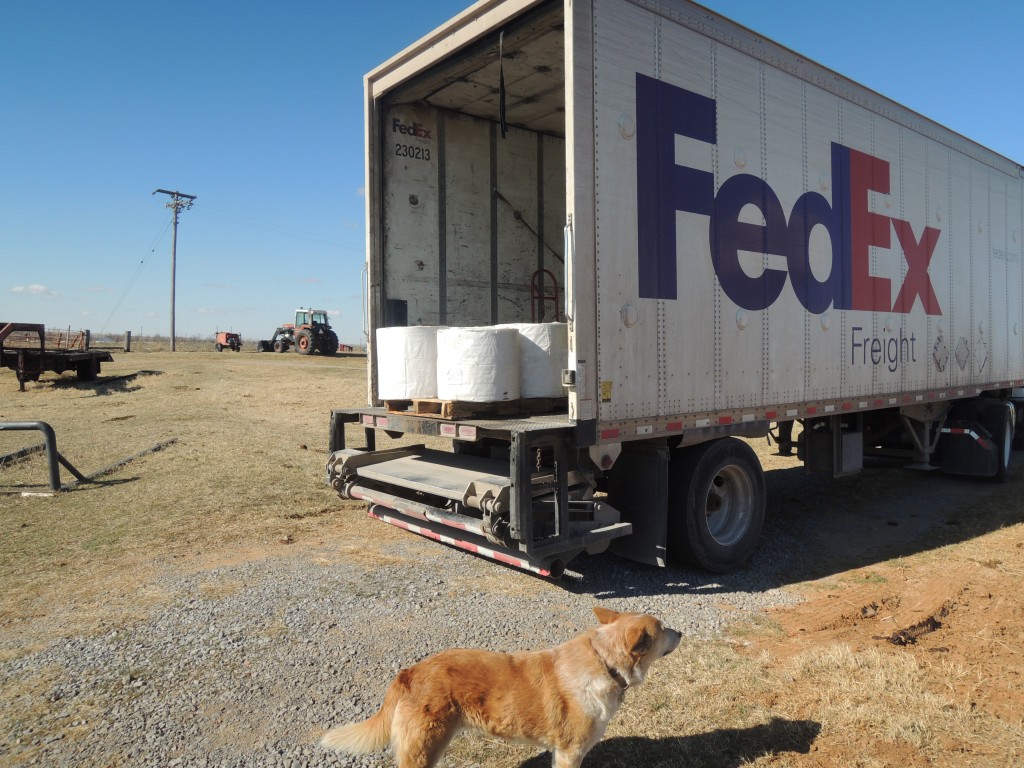
Each roll is 3,280 feet long and weighs about 175 pounds.
Because our “bags” are actually tubes, we had to figure out a way to seal one end that would be the beginning of the row. With a nail and some bailing twine, Aaron came up with a great method for sewing the end of the bag. After some trial and error, he also figured out the best way to load the measured and cut bag-tube onto a cardboard tube called a Sono tube. Think of this as a dispenser for the tube. There was a learning curve for determining the best ratio of soil to water, and our first row of bag was much too wet, which is sometimes referred to as a “weeper bag.” You could see little drops of water squeezing out of the mesh material. This bag will still harden and cure just as strong as a drier mix.
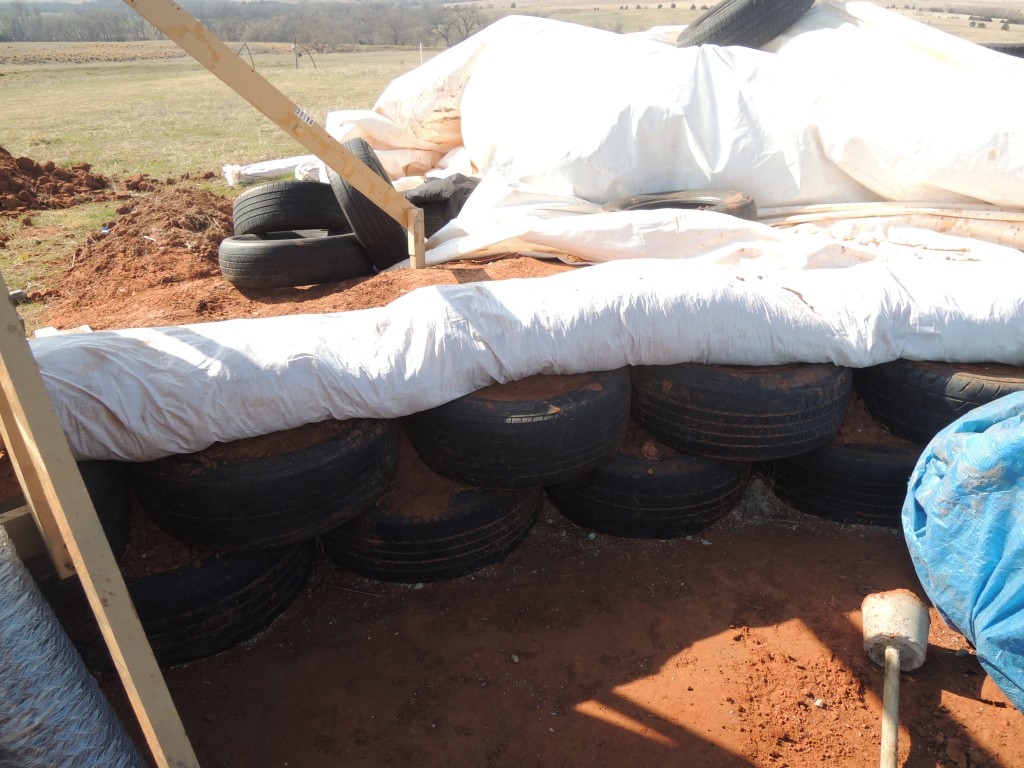
Kaki Hunter, from the Earthbag Building book, explains that there is an ideal consistency for the soil which hardens best in the bag, but is also the best for your personal preference. We quickly learned that a drier mix is easier to shovel, move, pack, and tamp. Our test for the best consistency is to form the soil into a ball and drop it from shoulder height onto a hard surface. It should do more than just crack, but not smash to smithereens.

After finding the best mix, we attempted the second row of bag and began to get excited! The rows tamp out to about 5 inches tall. The tentative plan is for the walls to be 10 feet (120 inches) tall. It really feels as if we are getting somewhere now. When you can physically see the progress each day, it feels like it moves along faster.

And the work continues! If you’d like to see more pictures and updates on the build, check out our Facebook Page. Also, if you have questions, you can use the comment box below or use the Contact Us page.

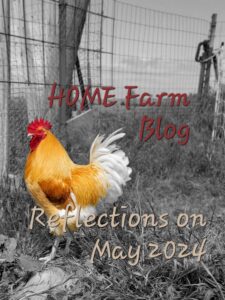
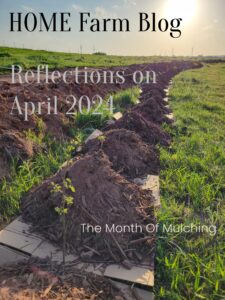



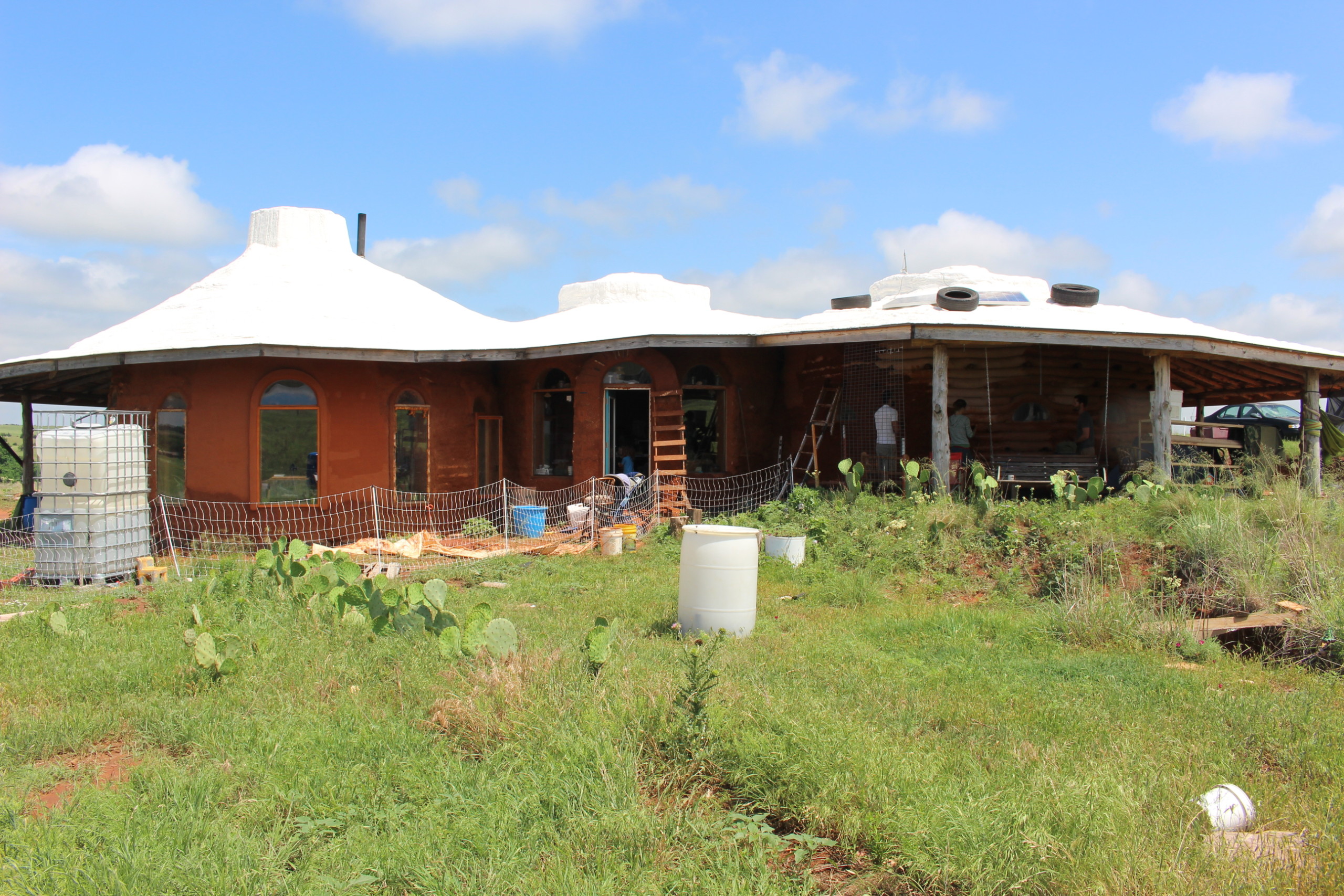

2 thoughts on “Reflections on March, 2014”
Where did you get your bags
We ordered our rolls of bag from a manufacturer in China. Took about 7 months to negotiate a deal and 6 months for them to produce and travel here. We had to pay in full upfront, direct wire transfer, organize international shipping, deal with customs and set up state side freight service from the US port. Nothing like ordering from Amazon!